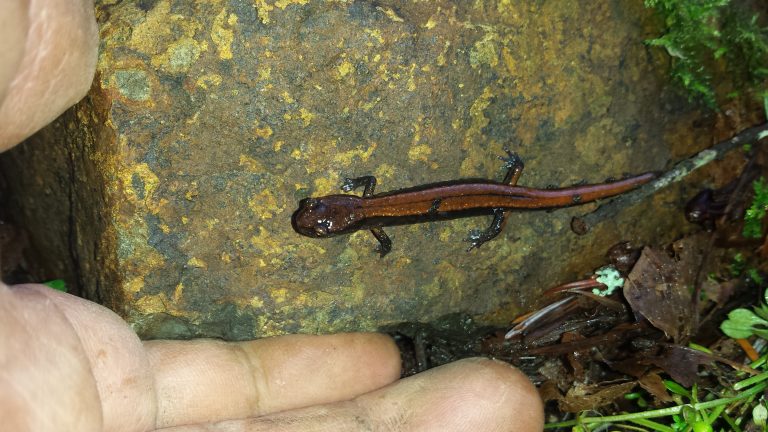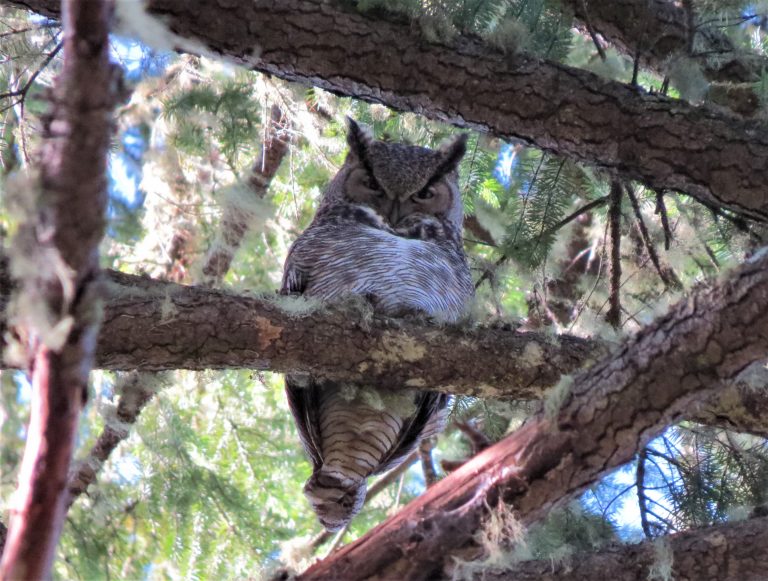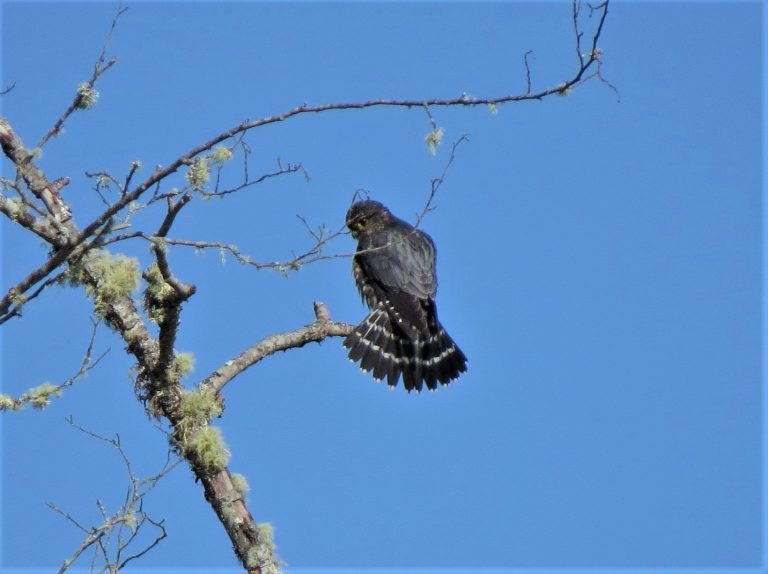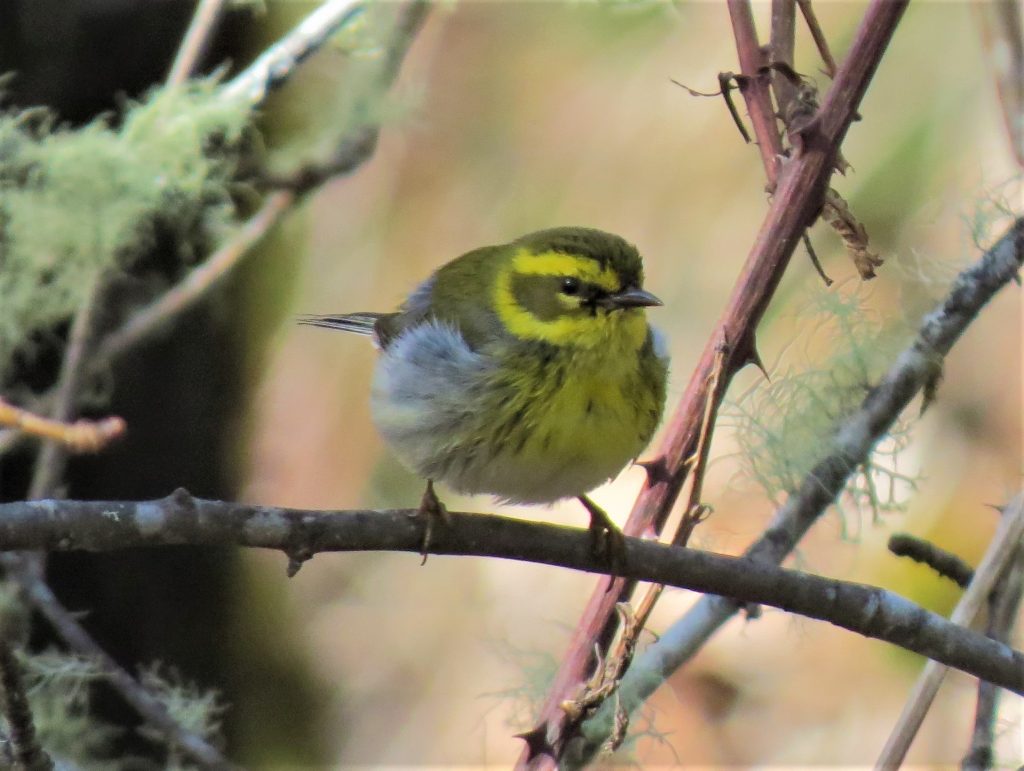
Winchester, OR–March 1, 2017. 1200-1415, I explored the patch of conifers immediately NE of the Umpqua Community College (UCC) Gym/Pool/Tennis area. This area is fairly steep, with a NE aspect, significant canopy cover of mature to early old Douglas-fir, with moderate to sparse ground cover. I was primarily looking for amphibians and wasn’t disappointed. I ended up finding two Western Red-backed Salamanders and one very small Ensatina. I was pretty happy about finding these amphibians here, right next to campus and in the “middle” of the Umpqua Valleys at low elevation, just above the North Umpqua River. Much of the surrounding area consists of grassy pastures, dry oak hillsides, and residential areas, not the kind of habitat where I think of finding forest salamanders, Plethodon in particular. I began to ponder why these species were here, apparently in some number as they were not hard to find. The NE aspect, steepness, and canopy cover certainly made this a more shaded site than much of the surrounding area, but still, there are plenty of areas like this where you will not find Plethodon species. I eventually realized, the whole NE edge of campus sits near a rocky cliff. Below the cliff is 20-75 m or more of talus slope, most of which is covered with forest floor humus or organic matter and patches of mineral soil. This talus, I surmise is perhaps 4-20 feet deep in places. In some places I could scrape away the forest floor organic matter, pull up a couple angular rocks, and find a matrix of air spaces around the rocks going deeper than I could see. My supposition is that this substrate, combined with the relatively cool site of the NE aspect, and the canopy cover, have provided a refuge for these species for perhaps thousands of years where they could be safe and moist, even during several years of severe drought or raging summer wildfire. In contrast, salamanders hiding under logs or shallow subterranean passages in mineral soil during severe drought or wildfire would likely be desiccated or killed.


It is amazing and interesting to have this habitat right next to the UCC campus, and only 300 m away from a very contrasting south-facing grassy slope with shallow soils and Buckbrush (Ceanothus cuneatus). The diversity of habitats on the UCC property is impressive! To document what occurs here and encourage others to get out and explore I’ve created the Umpqua Community College Biodiversity Project. I will encourage students and faculty to explore and contribute!
My bird list for the time is here.
My iNaturalist observations are here.


